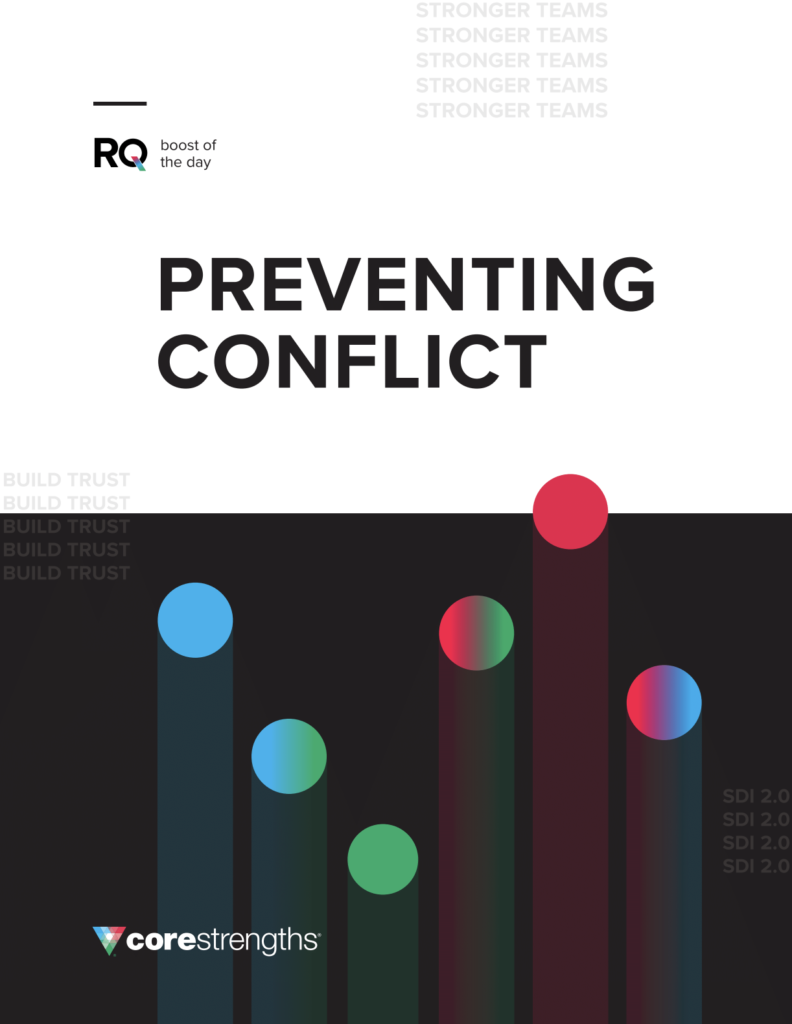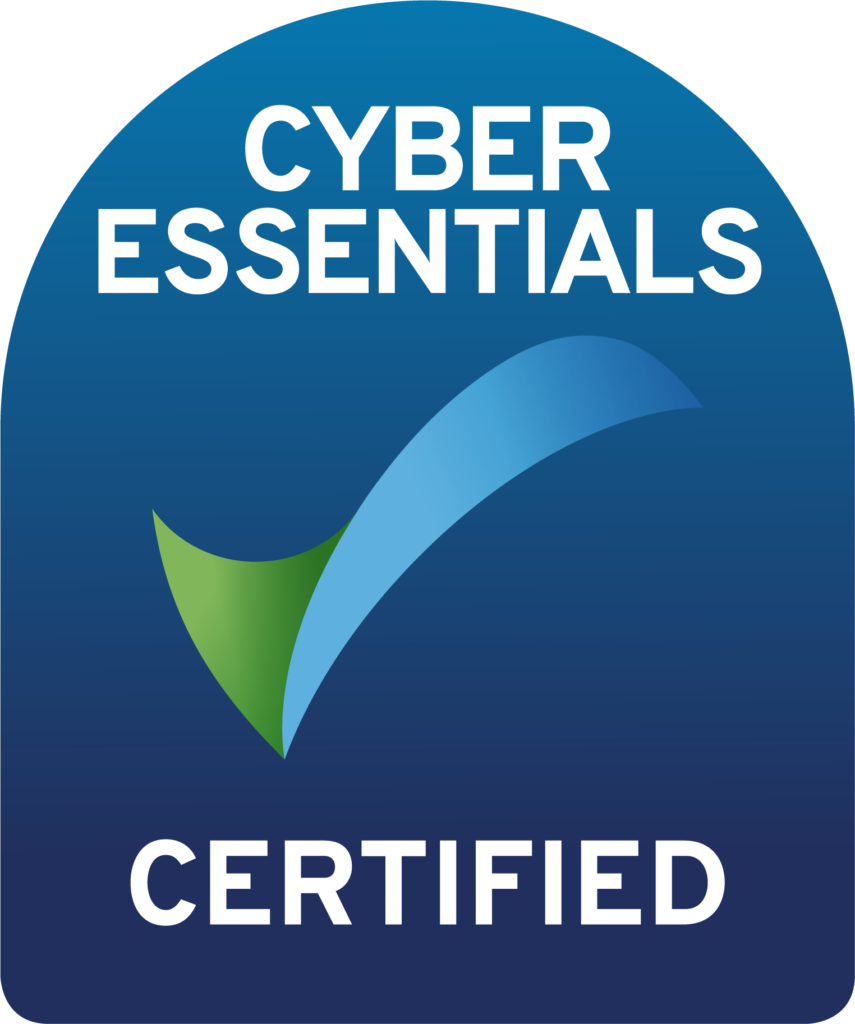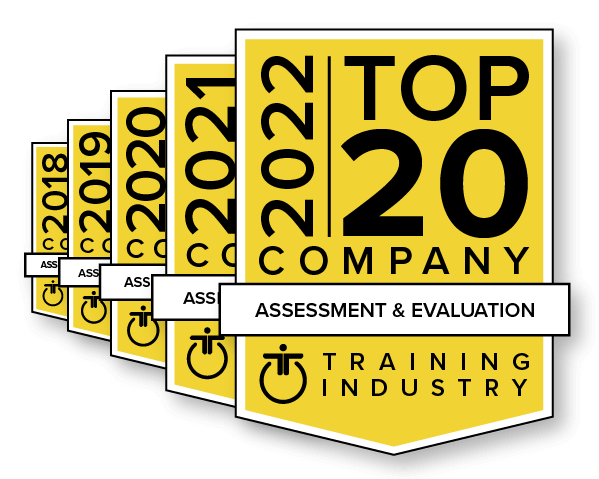Helping your team manage conflict in crisis
As we confront a global crisis in the form of a virulent pandemic, it can be easy to overlook the fact that each person experiences crisis and conflict in their own way. Fortunately, those of us who use the SDI to improve our relationships have a powerful tool at the ready to help people reflect on their own experience and more effectively navigate the situation. Unfortunately, we are all likely to experience deeper stages of conflict during this time than we normally do at work. We generally focus our workplace training on recognizing and managing Stage 1 Conflict, but now, and probably for the duration of this crisis, we are all likely to touch stages 2 or 3 – or to work with someone who is in one of these deeper stages. The purpose of this article is to help you recognize and manage the experience of conflict in yourself and your working relationships.
Let me start by being open with you about my recent experience. My Motivational Value System (MVS) is Red-Green and my Conflict Sequence is Green-Blue-Red. When it first became clear that we, like every other organization, would need to address this crisis, we began scenario planning. I was not feeling personally threatened, and this was consistent with my underlying motives when things are going well. I want to integrate process and performance to create strategy. I want to be effective and efficient. But as the threat loomed and I felt more anxious, I went into my first stage of green – wanting to analyze the situation. I looked for the most objective, fact-based sources I could find. I had no interest in opinion or speculation. I went deep into analysis mode, trying to find any way to insulate myself and our business from the impending threat. I got triggered into Stage 2 Blue when I clearly saw that no amount of analysis on my part could avert the threat. For me, Stage 2 Blue was when I resigned myself to the fact that we would need to give up or stop doing many things we care about in order to preserve the most important things. For me, when I feel forced to give up more than seems fair or reasonable, I get triggered into Stage 3 Red. And COVID-19 sent me into Stage 3 Red.
For me, Stage 3 Red is wanting to get confrontational and angry. But there really wasn’t anyone to get appropriately angry at, so I cursed out the virus every day on my ride home. Then I kept that negative energy going by getting edgy and irritable with people at home. I wanted to do something, anything, I just wanted to explode.
With the help of my family, friends, and colleagues, I was able to get myself back to a “detente” between my Motivational Value System and Stage 1 Conflict. Things are not currently what I’d call “going well” but they are as good as possible considering the circumstances and I am not entrenched in Stage 1 Conflict. And I think this might be what we all need to be ready for at work… the possibility that people will be on the edge of conflict for a while, and that they may feel so anxious and threatened that they move all the way into Stages 2 or 3.
So what can you do when there’s conflict?
The answer is in two parts: 1) get clear about how you have reacted so far and how to manage your own reactions, and 2) learn to recognize the stages of conflict in others and be prepared to have some new conversations.
Let’s start with reviewing these three stages and colors of conflict – the Conflict Sequence result you get from the SDI. That will help you to understand your own reactions and correctly identify the reactions of others. Then, with that in mind, we’ll take a look at a way to guide a conversation.
Conflict is triggered whenever something goes against a person’s values, restricts them from expressing their motives, or any type of threat to one’s sense of self-worth or survival. The COVID-19 pandemic has presented a clear and present physical and economic threat to every person in the world. People are perceiving this threat at different levels – and at different times. It’s not like the whole world suddenly goes into Stage 1 conflict at the same time. But for those of us who go into Stage 1 – here’s how it looks:
Signs of Stage 1 Conflict
Stage 1 Blue – wanting to accommodate the needs of others. During times of crisis like this, you will likely see an increase in care-taking behavior, along with frustration with others who appear (through their Stage 1 Blue glasses) to be selfish or inconsiderate. For some in Stage 1 Blue, you are also likely to see some wishful thinking, such as hoping that this problem will be solved sooner than some experts say.
Stage 1 Red – wanting to assert oneself. During times of crisis like this, you will likely see an abundance of activity, an elevated sense of urgency, and frustration with others who appear (through their Stage 1 red glasses) to be complacent. For some in Stage 1 Red you might see elevated risk-taking and competitiveness.
Stage 1 Green – wanting to analyze the situation. During times of crisis like this, you will likely see an increase in data collection and analysis activities, and frustration with others who appear (through their Stage 1 Green glasses) to be irrational or impulsive. For some in Stage 1 Green you are also likely to see some a decrease in communication and disregard for opinions or unsubstantiated statements.
A note about brackets. People with Conflict Sequences such as [RG]-B will generally experience some tension about how to respond during the first two stages, although their third stage is clear.
Remember that Stage 1 conflict is about you, the problem, AND other people. Stage 2 is where we get less focused on each other and more focused on ourselves and our own view of the problem. When two people are in Stage 2 conflict, they generally have a hard time really listening and understanding each other. Here are some clues about how to recognize Stage 2 conflict:
Recognizing Stage 2 Conflict
Stage 2 Blue – this is characterized by a desire to accommodate with certain conditions or to release some control and let others have their way. When people hit this stage, they are usually pretty clear about what is most important to them – what they are willing to sacrifice and what they are willing to protect at all cost or fight for. Don’t confuse accommodation here with weakness, as it may be followed by great resolve or forcefulness in Stage 3.
Stage 2 Red – this is characterized by a desire to prevail against others or the situation. It is generally more confrontational and directive than Stage 1 Red. When people hit this stage, they are frustrated that others have been unkind or illogical; they feel somewhat compelled to do what they believe is right even if there is some collateral damage. Bear in mind that Stage 2 red is generally a vigorous attempt to prevent total defeat or isolation.
Stage 2 Green – this is characterized by a desire to detach and carefully examine one’s position, assumptions, and options, and to remain as objective and rational as possible. When people hit this stage, they may become rigid or inflexible in the face of anything but irrefutable evidence. They may feel that this is the only way to prevent an angry emotional outburst or to stave off a total defeat. Don’t mistake their apparent isolation with a lack of involvement or interest, they desperately want things to make logical sense before taking any action.
A note about brackets. People with Conflict Sequences such as R-[BG] will generally experience some tension about what to do after their first stage is not effective. This tension continues into Stage 3.
Navigating Stage 3 Conflict
Stage 3 Conflict is quite rare in the workplace. But given the level of personal and organizational stress that many people are experiencing today, you may see something from your colleagues that seems “uncharacteristic.” For example, I rarely yell or get confrontational, so when I hit Stage 3 Red people can be surprised and think “that is not like you at all, Tim.” But that behavior is very much like me in the rare times that I hit Stage 3. Here are some clues about how to recognize Stage 3 Conflict, where people generally defend themselves, with less focus on the impact on others or the immediate problem:
Stage 3 Blue – for many people, this is a painful place where there is a sense of resignation and maybe even powerlessness. Keep in mind that people will work extraordinarily hard in Stage 2 to prevent getting to the point that they feel beaten. If they do get here, it is usually accompanied by some emotional pain.
Stage 3 Red – for many people, this is when they feel that they lose control and blurt out all the angry, or potentially hostile, things that they have repressed. To prevent getting here, they will yield until it hurts or they may attempt to escape the situation entirely. But if they do get here, it is often accompanied by regret for over-reacting.
Stage 3 Green – for many people, this is when they feel the need to totally withdraw from the situation or cut off contact with the people they were in conflict with. To prevent getting here, they will fight vigorously for their rights or yield all but the most important points. If they do get here, it can be like a barred door, never to be re-opened
Talking Through Conflict During a Crisis
Do you recognize yourself in some of these descriptions? Can you see these patterns of changes in your conflict motives playing out as you confront uncertainty and disagreements with others about how to navigate it? If you do, you’re also well-equipped to notice these stages of conflict in others.
Every one of us is going to talk with our colleagues about how recent events are impacting us and our families. And talking about it is exactly what we need to do. But how? Allow me to suggest four simple steps based on understanding the SDI – it’s basically de-escalating a conflict with the intent to start using productive strengths. Get them to talk about 1) themselves (focus on self) 2) how they see the problem (focus on self and problem) 3) who else is involved (focus on self, problem, and other), and 4) what strengths are needed today to make some progress (strengths and reasons). Ideally, you will have your colleagues SDI results available to help you anticipate and interpret what you are hearing, but if not, these tips can still work.
- Talk about what matters most to the people you are concerned about. Are they worried about physical or financial safety? What’s on their mind? You may or may not be able to do anything about what you hear – but talking can help them to start feeling connected to people and move toward some productive action.
- Talk about how they see their current concerns or problems. Be a good listener here and withhold debate or your opinions. The idea is let them express what they feel and what they are thinking about doing. Once you’ve discussed this for a while, you ask if they are ready to hear your opinions or start to talk about how their ideas might be received by others.
- At this point in the conversation, you can start to add your own opinions or reactions. We are assuming that steps one and two have started to de-escalate the feelings of conflict from Stage 3 or 2 – back to Stage 1, where the person you are concerned about can focus on themselves, the problem, and you (or other people). This part of the conversation will probably feel more collaborative, while the prior parts will probably feel more like just listening. Do not underestimate the power of listening to improve relationships and make people feel understood and accepted. Without acceptance, they are unlikely to engage in productive problem-solving with you.
- Given the situation at hand, what strengths do each of you need to deploy in order to make some progress? And what reasons connect these strengths to your respective motives? What results are you trying to create in your relationships?
If you and your colleagues both exit this conversation with a clear idea about what strengths are needed now – and how they connect to your motives and values – you will have done each other a tremendous service.
I hope these ideas prove useful to you. Even though you may be physically separated from people you care about, you still can have a productive relationship. Please practice physical social distancing – not emotional social distancing.









